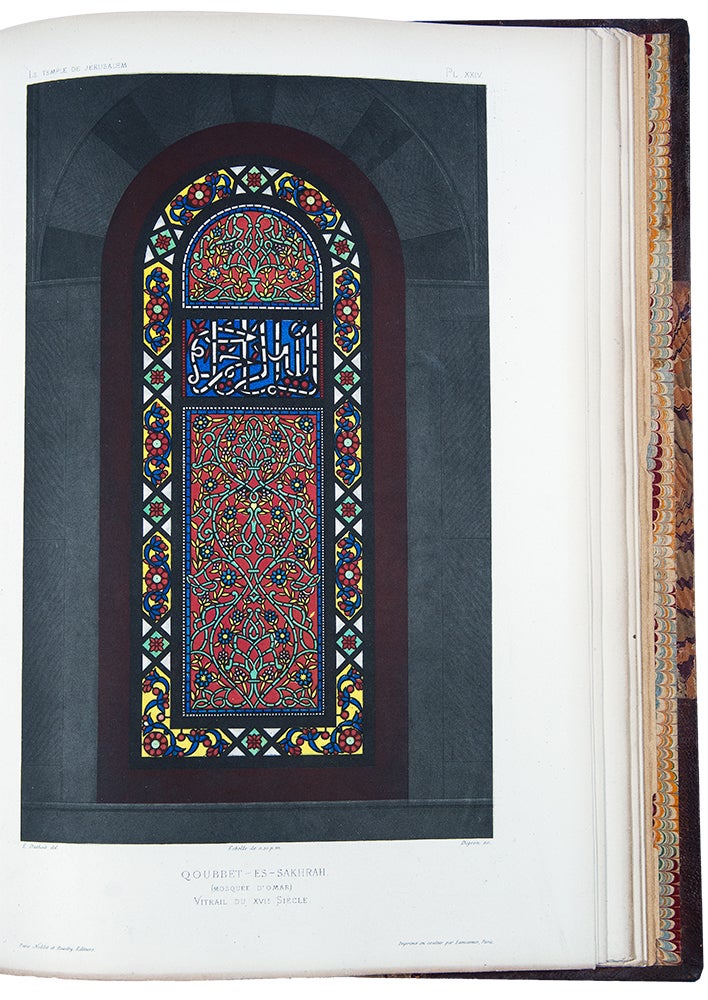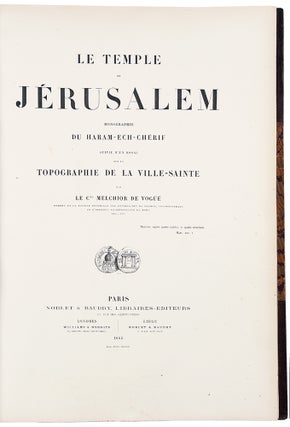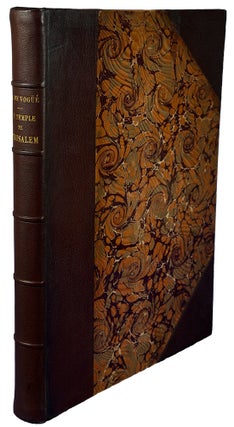DE VOGUE, Marie Eugenee Melchir, Vicomte (1829-1916)
Le Temple de Jérusalem Monographie du Haram-Ech-Chérif suivie d'un essai sur la topographie de la Ville-Sainte, par le Cte. Melchior de Vogüé
Paris: Noblet & Baudry, 1864. Folio. (17 3/8 x 12 3/8 inches). Half title. viii, 142 pp. 37 plates and maps (including 3 double-page and 11 hand-colored) drawn by M. de Vogüé, E. Duthoit, and W.H. Waddington.
Half brown morocco over marbled boards, spine in six compartments with raised bands, lettered in the second, marbled endpapers.
Rare and important archeological work surrounding the 19th-century survey of the Aksa mosque.
Born in Nice, Charles-Jean-Melchior de Vogüé (1829-1916) was a French diplomat, Orientalist, travel writer, archaelogist, philanthropist and literary critic. He served in the Franco-Prussian war and later as an ambassador in Constantinople in 1871 and in Vienna from 1875 to 1879. In the second half of the 19th century, between 1853 and 1854, de Vogüé embarked on an extensive survey of the Temple Mount at Jerusalem. He was accompanied by archaeologist William H. Waddington, artist and architect E. Duthoit, and later Henri Sauvaire, the French Consul in Beirut, who joined as photographer. With the help of the French Consul in Jerusalem, de Vogüé was able to acquire permission from the Ottoman authorities to start his research at the mosque, where he examined structural details, including the stones and walls, and described his findings in this work. The appendix details the topography of Jerusalem, and the plates depict painted entablements, cupolas, stained glass windows, and other architectural details such as sculptured pilasters and capitals. The importance of de Vogüé's work lies in the fact that he found remnants of ancient frescoes which were destroyed during a previous restoration. The different surveys of the mosque in the 19th century attest to the growing Western interests in the Holy Land.
Tobler p. 187; Roehricht 2340.
Item #39724
Price: $4,500.00






